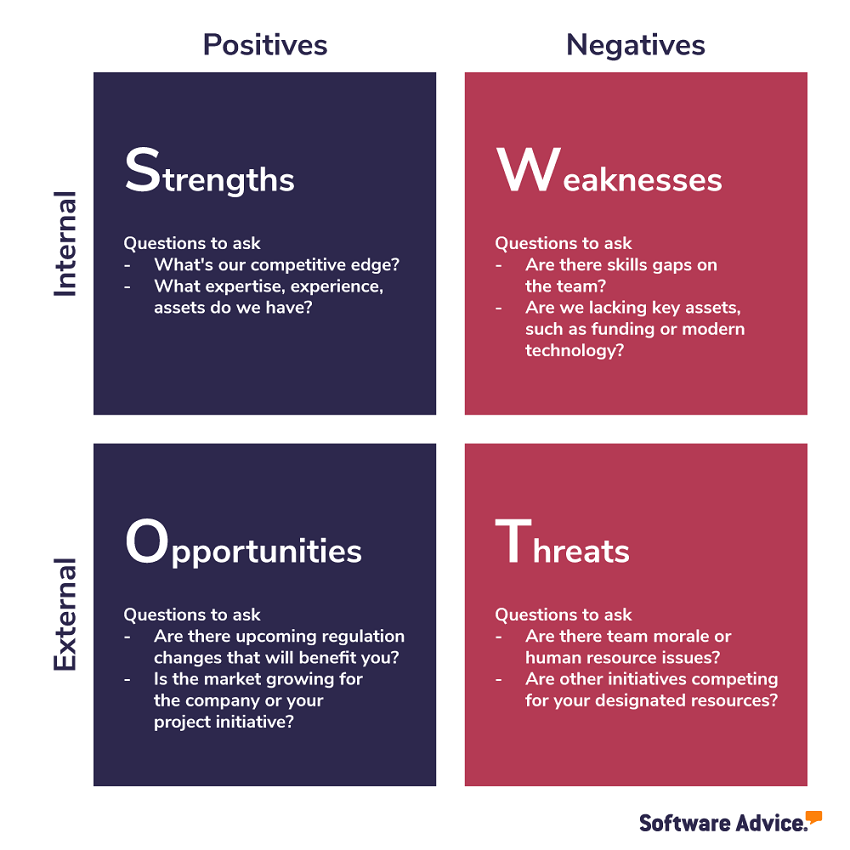
Unlocking Your Potential: Matching the Right Small Business Financing Option to Your Needs
December 13, 2023
Chart Your Course to Profit: Mastermind Your Small Business Budget
December 27, 2023Part 1: Mastering Strategic Planning for Your Small Business
Introduction: Why Strategic Planning Matters for Small Businesses
Imagine stepping into the bustling marketplace, surrounded by seasoned giants and agile newcomers. As a small business owner, navigating this competitive landscape can feel like scaling a mountain blindfolded. But what if you had a map, a blueprint to guide your every step? This is where strategic planning comes in.
It’s not magic, but a powerful tool that helps you set clear goals, anticipate obstacles, and chart a course to achieve sustainable growth.
By strategically planning, you:
- Gain clarity: Define your vision and direction, aligning your entire team towards a shared purpose.
- Make informed decisions: Analyze your strengths and weaknesses, capitalize on opportunities, and mitigate potential threats.
- Stay focused: Prioritize tasks and resources, preventing distractions and keeping your eyes on the prize.
- Adapt with agility: Respond to market shifts and industry changes with flexibility and resilience.
- Boost performance: Increase profitability, attract new customers, and build a lasting competitive advantage.
Investing time in strategic planning may seem daunting, but it’s an investment that reaps exponential rewards.
Defining Your North Star: Setting Smart Goals for Your Business
Your goals are the lighthouses guiding your ship through the stormy seas of competition. But not all goals are created equal. To ensure your journey is successful, set SMART goals:
- Specific: Clearly define what you want to achieve (e.g., “Increase online sales by 20% in Q1”).
- Measurable: Establish benchmarks to track progress and stay motivated (e.g., “Generate 100 new leads per month”).
- Attainable: Set ambitious yet realistic goals that stretch your potential without discouraging you.
- Relevant: Align your goals with your overall vision and values (e.g., “Improve customer satisfaction to achieve a Net Promoter Score of 80”).
- Time-bound: Set deadlines to create a sense of urgency and drive action (e.g., “Launch new product by December 31st”).
Remember, SMART goals are your roadmap to success. They provide a clear direction, keep you accountable, and motivate you to push boundaries.

Understanding Your Landscape: Conducting a SWOT Analysis
Before plotting your course, it’s crucial to understand the terrain. Enter the SWOT analysis, a powerful tool that helps you assess your:
- Strengths: Internal factors that give you an edge (e.g., passionate team, innovative product, exceptional customer service).
- Weaknesses: Internal limitations that hinder your progress (e.g., limited marketing budget, lack of technical expertise, operational inefficiencies).
- Opportunities: External factors you can leverage for growth (e.g., emerging market trends, industry gaps, potential partnerships).
- Threats: External challenges that could derail your plans (e.g., new competitor entry, economic downturn, changing regulations).
By conducting a thorough SWOT analysis, you gain valuable insights into your position within the market, enabling you to capitalize on strengths, address weaknesses, seize opportunities, and mitigate threats.
Think of it as a comprehensive audit of your business – a crucial step for crafting a winning strategy.
Knowing Your Enemy: Analyzing Your Competition
In the battlefield of business, understanding your competitors is key. Analyze their:
- Market share: How big is their slice of the pie?
- Product offerings: What do they offer, and how does it compare to yours?
- Pricing strategies: Are they undercutting you or targeting a premium market?
- Marketing tactics: How are they reaching their target audience?
- Customer service: What kind of experience are they providing?
By gathering this intelligence, you can identify their strengths and weaknesses, find gaps in the market, and develop unique selling propositions that set you apart.
Remember, competition isn’t about copying – it’s about learning and innovating to carve your own niche.
Charting Your Course: Building Your Strategic Plan
Now that you understand your goals, strengths, weaknesses, opportunities, and threats, it’s time to map out your journey. Your strategic plan is your blueprint for success, encompassing:
- Vision & Mission Statements: Define your aspirations and core values, providing a guiding light for every decision.
- Core Values & Guiding Principles: Establish unwavering principles that shape your company culture and behavior.
- Strategic Objectives & Initiatives: Set ambitious yet achievable goals aligned with your vision and mission.
- Actionable Marketing & Sales Strategies: Outline specific tactics to attract, engage, and convert customers.
- Operational Plans & Resource Allocation: Determine how you’ll leverage your resources to execute your plan
- Financial Projections & Risk Management: Forecast your finances, identify potential risks, and develop mitigation strategies.
Here are some helpful tips for building your strategic plan:
- Involve your team: Encourage collaboration and buy-in from all levels of your organization.
- Keep it realistic and flexible: Set goals that are achievable but leave room for adaptation.
- Quantify your goals and strategies: Use metrics to track progress and measure success.
- Communicate your plan effectively: Share your vision and goals with everyone in the company.
- Regularly review and update your plan: Monitor progress, adapt to changing circumstances, and learn from your experiences.
Remember, your strategic plan is a living document, not a set-in-stone decree. Embrace flexibility and be willing to adjust as needed to navigate the ever-changing business landscape.
Navigating the Road Ahead: Implementing and Monitoring Your Plan
Turning your strategic plan into reality requires action. Here are some key steps for successful implementation:
- Assign ownership and responsibilities: Break down your plan into actionable tasks and assign them to specific team members.
- Set deadlines and milestones: Establish clear timelines for achieving each objective.
- Communicate the plan and expectations: Ensure everyone understands their role and contributes their best effort.
- Monitor progress and track results: Regularly assess your performance against your goals and objectives.
- Adapt and adjust as needed: Be willing to course-correct if unforeseen challenges arise or opportunities emerge.
Effective implementation requires consistent communication, collaboration, and accountability. Celebrate successes along the way to keep your team motivated and engaged.
Part 2: Navigating the Terrain with Real-World Maps – Case Studies in Strategic Planning
Theory is powerful, but practice makes perfect. Let’s embark on real-world journeys with three small businesses who conquered their goals through strategic planning:
Case Study 1: From Home Kitchen to Local Hotspot – The Rise of “Spicy Spoon”
- Objective: Expand beyond home baking and establish a brick-and-mortar café.
- Strategies:
- Market research: Identified a gap for artisanal baked goods and vegan options in the community.
- Financial planning: Secured a small business loan and developed a realistic budget.
- Operational efficiency: Streamlined kitchen processes and implemented online ordering for takeout.
- Targeted marketing: Leveraged social media marketing and collaborated with local businesses for cross-promotion.
- Results: “Spicy Spoon” opened its doors within six months, exceeding initial sales projections and fostering a loyal customer base.
Case Study 2: Tech Tornado – “Appify” Storms the Digital Market
- Objective: Achieve rapid user growth and monetize a new mobile app.
- Strategies:
- Product development: Focused on innovative features and intuitive user interface to stand out from competitors.
- Agile development: Employed short development cycles and gathered user feedback for continuous improvement.
- Data-driven marketing: Analyzed user behavior and implemented targeted advertising campaigns.
- Strategic partnerships: Collaborated with major mobile network operators to pre-install the app on new devices.
- Results: “Appify” reached over 1 million downloads within a year, attracting investors and securing lucrative advertising deals.
Case Study 3: Green Thumbs and Blue Chips – “Urban Blooms” Cultivates Success
- Objective: Increase online sales and expand product offerings for their sustainable gardening business.
- Strategies:
- Content marketing: Created informative blog posts and engaging social media content to attract eco-conscious customers.
- Search engine optimization (SEO): Optimized website content and product descriptions for increased visibility in online searches.
- Partnerships with influencers: Collaborated with gardening and sustainability bloggers to promote products and reach new audiences.
- Product diversification: Introduced new plant kits and eco-friendly gardening accessories based on customer demand.
- Results: “Urban Blooms” doubled online sales within a year, successfully launched new product lines, and established itself as a leading brand in sustainable gardening.
These diverse cases showcase the transformative power of strategic planning. From cozy cafes to tech startups and eco-businesses, each navigated their unique challenges and achieved remarkable success by charting a clear course and adapting their strategies along the way.

Part 3: Empowered Navigation – Resources and Tips for Your Strategic Voyage
Equipped with real-world inspiration, let’s prepare your toolkit for crafting and implementing your own winning strategic plan:
Resource Arsenal:
-
Business Planning Software:
- HubSpot: Streamline planning, collaboration, and reporting with intuitive features.
- LivePlan: Generate professional business plans and financial projections with ease.
- Zoho Projects: Manage tasks, track progress, and stay organized through collaborative project management.
-
Market Research Tools:
- Google Trends: Analyze search trends and identify emerging customer interests.
- SurveyMonkey: Create comprehensive surveys to gather valuable customer feedback.
- Statista: Access reliable industry data and market reports.
-
Data Analytics Platforms:
- Google Analytics: Track website traffic, measure campaign performance, and gain insights into customer behavior.
- QuickBooks Online: Monitor financial performance, generate reports, and manage accounting functions efficiently.
- Zoho Analytics: Create visually appealing dashboards to analyze key data points and make informed decisions.
Actionable Tips:
- Start small and build momentum: Don’t overwhelm yourself. Begin with a few achievable goals and build upon your successes.
- Embrace SMART goals: Define Specific, Measurable, Achievable, Relevant, and Time-bound goals to ensure clarity and focus.
- Involve your team: Leverage the collective wisdom and creativity of your team for comprehensive planning and buy-in.
- Communicate effectively: Keep everyone informed of the plan, goals, and progress to maintain alignment and motivation.
- Celebrate milestones: Acknowledge achievements, big and small, to keep morale high and maintain momentum.
- Regularly review and adapt: Don’t set your plan in stone. Be prepared to adjust your strategies based on market changes and feedback.
- Seek professional guidance: Don’t hesitate to consult with experienced business advisors or coaches for tailored support.
Remember, strategic planning is not just a document; it’s a dynamic roadmap for your business journey. By equipping yourself with the right resources, implementing actionable tips, and embracing continual adaptation, you can confidently navigate the ever-changing business landscape and propel your small business towards sustainable success.
FAQs: Answers to Your Pressing Questions about Strategic Planning for Small Business Owners
- Q: How often should I update my strategic plan?
A: There’s no one-size-fits-all answer, but aim to review and update your plan at least annually. More frequent revisions might be necessary in rapidly changing industries or during periods of significant growth.
- Q: What are common mistakes to avoid in strategic planning?
A: Common pitfalls include setting unrealistic goals, neglecting to analyze the market and competition, failing to involve your team, and lacking flexibility in adapting to change.
- Q: How can I get buy-in from my team for the strategic plan?
A: Involve them in the planning process, clearly communicate the benefits, and ensure everyone understands their role in achieving the goals.
- Q: What resources are available to help me with strategic planning?
A: Numerous resources are available online and in libraries, including templates, guides, and workshops. Consider seeking professional guidance from business consultants or coaches.
Resources
SCORE: How to Craft a Strategic Plan for Your Small Business:
Small Business Administration: Business Planning Resources:
Vistage: 10 Tips to Transform Your Company with Strategic Planning:




